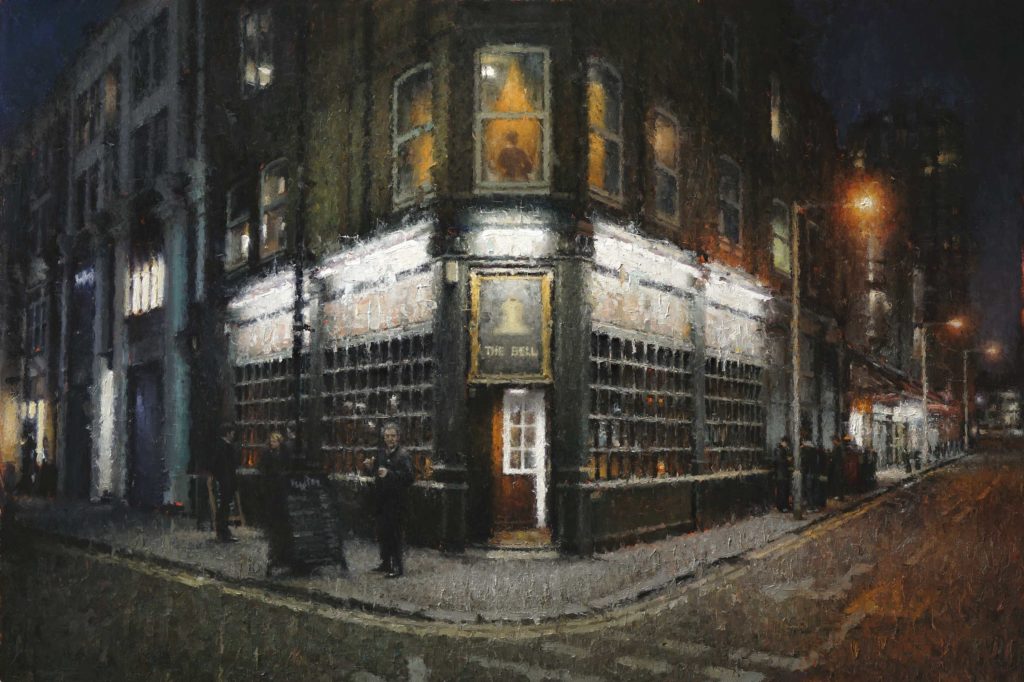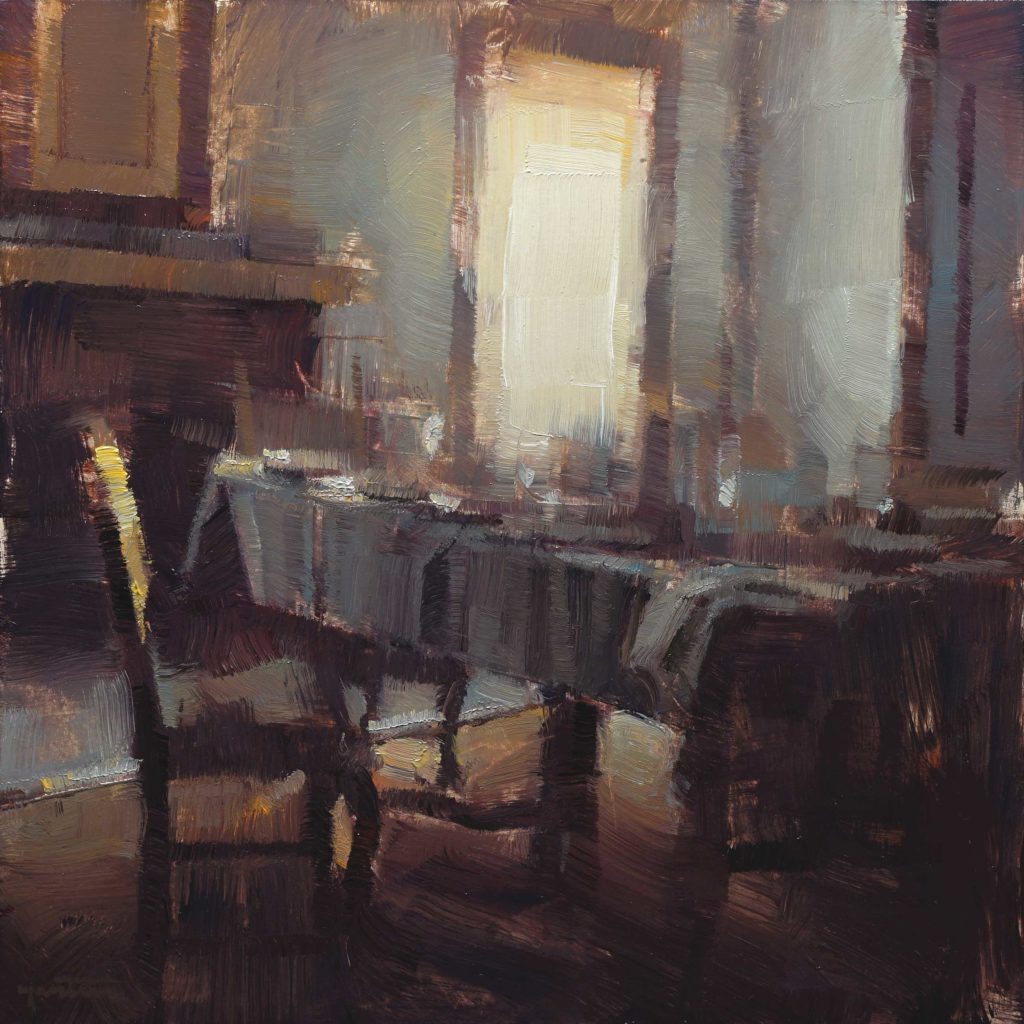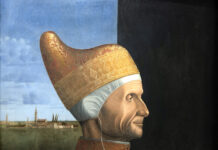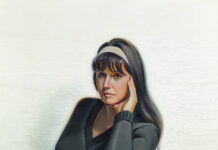By Vanessa Françoise Rothe
It is often said that to succeed in painting, you must dedicate your life to it. For Nicolas Martin (b.1980), that dedication has made all the difference.
Born and raised in the suburban town of Chelles, near Paris, young Martin was often found holding a pencil and paper. He remains grateful for the encouragement he received, especially from his mother, who corrected his drawings, spurred his artistic curiosity, and taught him about aesthetics. Instead of buying him new bicycles, she would give him books on Monet and other famous artists. Martin particularly recalls his failure in an art competition as a powerful impetus to succeed: “As a child, I always felt a bit different, a rebel, on the side, but without being completely anti-social.”

Growing up near Paris, Martin had many of the world’s most revered master-works available to consult. He frequented the Musée du Louvre and Musée d’Orsay, as well as smaller museums, attending their special exhibitions and referencing their publications. At 15, Martin passed a difficult exam to enter the Auguste Renoir School of Art, where his talent was nurtured for three years. Upon earning his high school diploma there, he could opt to enter another Parisian art school, or take a road less traveled — a degree from the Université Laval in the historic Canadian city of Québec. Being adventurous, even rebellious, by nature, Martin studied graphic design and communications there because he had been advised that these fields constituted the only way to make a living in the art world. Ultimately, he won a competition run by La Fondation Marcel Bleustein-Blanchet pour la Vocation, which offered him unique opportunities back in France. Martin went on to work as a successful designer and art director in both France and Canada, engaging with such prestigious clients as the Parisian department store Galeries Lafayette.
Throughout this period, full-time work as a fine artist seemed inconceivable; Martin was warned that “many are called to painting, but few are chosen.” Yet his impulse to paint endured, and one day his life circumstances aligned so that he could take up his brushes again, this time for good.
He explains, “I started life as a painter at age 30, yet the need to create has been a constant in my life. The fact that I can do this as my profession, and my son James, are my two greatest achievements.”
Martin stopped drawing in order to devote his energy solely to painting: “I have set aside every element of life that would affect my concentration, and I dedicate all my time to my craft. I surround myself with positive things and people, bypassing anything that might slow my progress.” He adds with a wink: “If you decide to become a painter, you have it in you, and you can’t make yourself lead a ‘normal’ life. You really see life differently.”

Influences, Subjects, and Techniques
Martin has always been impressed by the boldness of the French Impressionists, their rebellion against the salons and academies, and their discernment of beauty in everyday life. He has been especially inspired while reading the biographies of such talents as Manet and Monet, yet he is not devoted to the 19th century only: he also reveres the British painter Lucian Freud (1922–2011). “Never was human flesh made so believable,” Martin enthuses. “It’s not Freud’s style of painting, but his way of thinking. To appreciate him, you must understand his obsession with the authenticity of his subjects, then the brushstrokes he used to express it. I admire his obsession, devotion, and work ethic.” Martin also draws inspiration from the intriguing interiors painted by Greece’s Giorgos Rorris (b. 1963).

Martin’s subjects range from landscapes to interiors, from nocturnes to figures. He explains, “I don’t pursue what I think will sell or please someone, but rather what I see and am attracted to, how it makes me feel at that moment. I want to share that with others.” The 19th-century American thinker Henry Ward Beecher said, “Every artist dips his brush into his own soul, and paints his own nature into his pictures.” For Martin, then, paint is a translator; with it, he interprets what he sees and feels. He is particularly captivated by moments of intimacy and self-reflection: figures paused in thought, in the bath or bed, leaning against walls.
Most artists notice everything around them, seeing everything in their lives as fodder for their next artwork, even as a tableau vivant. They might note the exact color of a person’s eyes upon meeting, the texture of a fabric, the subtle effects of light falling on a wall. Martin sees the world this way. He is particularly attracted to interiors and finds that viewers identify with them as well. Interiors are often linked to someone and tell a story, or many stories, of what occurred there. They especially resonate with Martin because he can devote attention to how light affects the room’s atmosphere. “We see things only because of light,” he notes. “I’m obsessed with light, which greatly influences my choice of subjects.” Martin has also painted many night scenes in his effort to understand the effects of artificial light. With that knowledge under his belt, he moved on to interiors where light bathes old wooden floors. “There are different types of light,” says Martin, “and each of my paintings brings a new challenge and perhaps the solution to my next one. I’m constantly trying to tame the light.”

In a scene like “Dimanche,” viewers focus not on the dining table itself, but rather on the space’s elements, lighting, and color. Martin says it “can be interpreted in various ways — simply enjoyed for what it is, or there may be a story there.” His manner is a subtle mix of realism and impressionism, with softly blended edges most noticeable where one object meets another, or where an object meets the background. Through deft drawing and crisp corners, Martin delivers just enough realism to convey how the scene’s contents are constructed, but also the delicate lighting effects that impressionists use to convey mood. Martin builds up many layers of paint, sometimes as many as 20, to convey volume and depth. “Dimanche” epitomizes this mix of straightforward subject and combining of realism and impressionism: the edges are soft (note the chair dabbed with yellow sunlight) and their interplay with light enhances the mood. We view the ordinary world that Martin sees, and also the grace of his process.
Learn more about Nicolas Martin at www.theartofnicolasmartin.com.
Sign up to receive Fine Art Today, the free weekly e-newsletter from
Fine Art Connoisseur magazine.









Nice article, very insightful. Nicolas Martin is a very talent artist, love his style, kind of reminds me of Agnieszka Pilat on the new ATO Gallery website